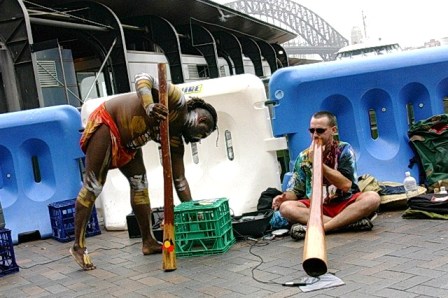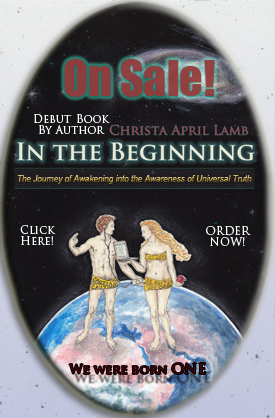Music from Australia

Australian Aboriginal music performers playing the yidaki.
About: Music from Australia is music produced in the area of, on the subject of, or by the people of modern Australia, including its preceding Indigenous and colonial societies. Indigenous Australian music is a part of the unique heritage of a 40–60,000 year history which produced the iconic didgeridoo. Contemporary fusions of Indigenous and Western styles (exemplified in the works of Yothu Yindi, Christine Anu and Geoffrey Gurrumul Yunupingu) mark distinctly Australian contributions to world music.1
Similarities to other music styles: Coming Soon.
Influences: Coming soon.
I’m open to adding other categories or changing names…
DISCOVER MORE
From Encyclopedia Britannica: Music and dance of Australian Aborigines are important elements of sacred ceremonies that reenact mythological origins of the tribes and ensure the continued supply of foods through the propitiation of totemic plants and animals. Little is known about the internal structure or basic movements of the various Aboriginal dance traditions; however, in general terms there are often mimetic movements involving the entire body that are used to add a visual interpretative extension to the oral tradition of the tribe. 2
National Geographic World Music:
Aborigine Traditional Music: For thousands of years, Aborigine myth has held that the natural world was created by song. Since the ’70s, Australia’s Aborigines have used music as an outlet for social concerns and political grievances and have had a few hits, too.
Aboriginal creation myth speaks of beings who, in a primordial “dreamtime,” willed much of the material world into being by singing the names of its elements: birds, rivers and rocks. So naturally, music plays an important part in Aboriginal ceremonies honoring nature, recognizing death or in the passing down of oral history. The death wail (a song of mourning) and bunguul (epic storytelling songs) are common types of Aboriginal songs. Aboriginal clans, of which there are hundreds, have their own songs often in different dialects. Clan songs include emeba (Groote Eylandt), fjatpangarri (Yirrkala) and manikay (Arnhem Land).
Though it was particular to the clans in northern Australia originally, the didgeridoo (or yidaki) is now the most recognizable instrument in Aboriginal music. The classic didgeridoo is made from a termite-hollowed bamboo or eucalyptus limb, though today it’s common to find didgeridoos made of PVC. The didgeridoo is played as a kind of woodwind aerophone, producing a low frequency sound that can be sustained and heard over long distances. Hearing (and playing) the instrument is also said to have meditative effects, which made the didgeridoo important in Aboriginal shamanistic and healing practices. Traditional Aboriginal music also makes use of the body as an instrument with slapping, clapping, stamping of feet and the tapping of bilma (clapping sticks) and boomerangs often building the rhythm.
Forced assimilation and religious conversion by European settlers disconnected most Aborigines from their traditional culture and music. But in the last quarter century Aboriginal music has been revived as a vehicle for social protest, often as a hybrid of Western pop/rock. The land-rights movement and the politically conscious message of Jamaica’s Bob Marley were major sources of inspiration to Aboriginal musicians in the late ’70s. The 1981 low-budget docudrama The Wrong Side of the Road looked at two days in the lives of actual Aboriginal rock/reggae bands Us Mod and No Fixed Address. In the late ’80s, the multiracial Yothu Yindi emerged as Aboriginal rock’s most popular band, blending traditional instrumentation, performances from painted dancers with Western rock instrumentation and thoughtful political lyrics. Another act from the Northern Territorities, Blek Bala Mujik switches between traditional nature-oriented tunes and pop/rock and puts forth a message of environmental concern. The group’s “Walking Together” was used as a theme by Qantas Airlines.
A member of the Stolen Generation, and a former homeless busker, Archie Roach is one Australia’s most respected Aboriginal singer-songwriters, specializing in acoustic-guitar-based ballads that deal with personal and historical hardships of his people. Discovered by Paul Kelly, Roach had been critically lauded for his early ’90s albums, such as Charcoal Lane, and 2002′s Sensual Being. Kevin Carmody and Roach’s wife, Ruby, Hunter are also key figures in the Aboriginal singer-songwriter scene.
Founded in 1980, the CAAMA (Central Australian Aboriginal Media Association) grew to be a national Aboriginal-run media outlet, boasting a TV company and a record label. CAAMA has supported music from tribal and desert areas and nurtured bush bands including Blek Bala Mujik. Founded in 1964, the Australian Institute of Aboriginal and Torres Strait Studies keeps an audio archive of indigenous music collected since 1898. —John Dugan3
VIDEOS
Example of Native Australian Aboriginal Music
Part of a documentary made of a group of Indigenous dancers from different parts of Australia who made the trip to Nyinyikay’ in NE Arnhem Land to learn about traditional Yolngu dance.
Find more here: iDIDJ Australia Didgeridoo Channel
Another example of the didgeridoo.
Source:
1.Music of Australia, Wikipedia. http://en.wikipedia.org/wiki/Music_of_Australia
2.Oceanic music and dance (2011). In Encyclopædia Britannica, Inc. Retrieved July 18, 2011, from Encyclopedia Britannica Online: http://www.britannica.com/EBchecked/topic/849275/Oceanic-music-and-dance/14331/Australia
3. Aborigine Traditional Music (John Dugan). National Geographic World Music, Natgeo Music. http://worldmusic.nationalgeographic.com/view/page.basic/genre/content.genre/
aboriginal_traditional_684/en_US









